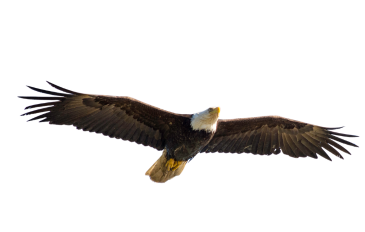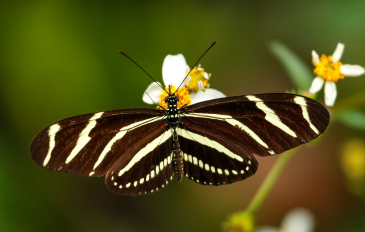Learn How Sanibel Animals and Plants Adapted After Hurricane Ian.
As a Florida native (yes, that's rare) and an only child, Mary Ellen Pfeifer grew up playing outside year-around. Most often she was barefooted, as it was the best way to climb trees, and study all forms of plants and animals that wandered into her yard. From dawn to dusk she could be found exploring every inch of the yard. She knew every ant hill and how long it took them to rebuild, loved banana spiders with their incredible colors and elaborate webs, and was perpetually in trouble for using her Mom's Tupperware to collect and study "doodle bugs" or "ant lions". This love of nature and lack of siblings kept her laser focused on science which she continues to enjoy on Sanibel. Every event be it natural or manmade provides an opportunity to study how plants and animals respond to environmental changes. Hurricane Ian provided many of those opportunities to study ecosystems under pressure. It is this background that fuels her passion today for studying the natural world and pressures that effect change.
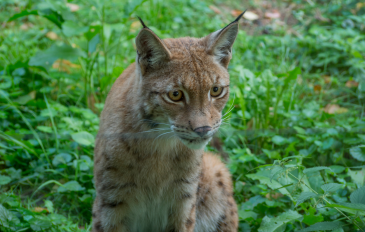
How Are Sanibel Coyotes and Bob Cats Doing After Ian?
It's difficult to say just how many Coyotes survived after the storm since there no population studies prior to Ian for comparisons. For many of us living on Sanibel shortly after Ian, it was eerily silent and pitch dark after nightfall, as most homes and condos were uninhabitable. Yet, every so often the yips and excited barks of a pack of coyotes would break the silence. There have been several sightings of Coyotes since Ian and many island residents knowing that the fresh water was limited, would leave water out for wildlife. For many animals this was their only way to survive.
Adding to the lack of water, was the lack of animals that normally make up a coyote diet. Most of the island's marsh rabbits, palm rats, snakes, frogs and lizards were severely reduced due to the storm surge. However, nature finds a way, and the Coyotes turned their focus towards the beach where they predated the sea turtle nests. It's still quite common to see coyote tracks in the dunes along the beaches.
While Coyotes are easy to hear, the Bob Cats are more elusive but they have been spotted on the Island since Ian. Island residents are still encouraged to report wildlife sightings.
What Happened to Sanibel's Nesting Birds After the Storm?
For the first few months after Hurricane Ian, the birds most frequently seen in large flocks were buzzards. This was difficult to experience, as it was a grim reminder of the Island's condition. The birds we all loved seeing seemed to have disappeared. "Did they know a storm was coming? Did they fly to safer ground? Will they come back?" In the months that followed, we could begin to answer these questions. Prior to Hurricane Ian there were 10 active Bald Eagle nests, 9 of the nesting pairs of Eagles returned to Sanibel to nest again. One pair of Eagles nested over a very active staging area for debris and were spotted picking Iguanas off of trash piles.
A year after Ian, we had a Screech Owl back in one of our three bird boxes. This past Winter, the snow birds were back including Roseate Spoon Bills, and White Pelicans. Our beloved Snowy Plovers are also nesting on the beaches again. Due to the lack of beachfront rental properties this past season, the birds literally had the beaches to themselves and it was a remarkable sight to see as hundreds of shorebirds gathered on sandbars at low tide.
Our Osprey population also came back quickly as they found many suitable areas to nest. There is even one Australian Pine along Periwinkle Way with a traffic cone lodged at the very top. Imagine our surprise to see an Osprey nest now surrounding that traffic cone nearly obscuring it from view. Nature is incredibly resilient.
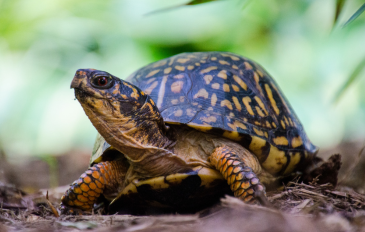
How Did Turtles, Alligators & Snakes Survive After the Hurricane?
During the first few months after Ian made landfall, every animal was displaced including many reptiles. It was not uncommon to find an Alligator in your yard, on the street, or crossing your path. Their habitat was gone, the vegetation that provided cover no longer existed, and the water was too salty to sustain much of their normal food sources. Since our freshwater is still quite brackish it's hard to predict how our freshwater reptiles will adapt to this less than desirable habitat. The more rains we have, their survival odds will improve as our inland waterway salinity is reduced.
My daily walks to clean debris of Sanibel's beaches in the early months after the storm resulted in finding many box turtles, that normally live in the dune vegetation, disoriented on the beach attempting to hide in seaweed and debris. I was able to get 16 of these Box Turtles to SCCF for tagging and relocating into more suitable habitats. It's believed that the box turtles survived by digging the front half of their shells into the ground and hanging on.
One remarkable find was a tiny mud turtle about the size of a quarter about 5 months after Ian inside the dried sludge in the Pfeifer Realty Building that lost it's roof during the storm. Upon delivering the turtle to SCCF we learned that the word estivate. This verb describes how an insect, fish or amphibian can spend a hot or dry period in a prolonged state of dormancy or torpor, similar to hibernation. Who knew?
Our beloved Gopher Tortoises didn't fare as well as the Box Turtles. Many burrows that were inhabited prior to Ian were empty after the storm. Mostly those closest to the beach were found to be empty leading experts to believe that several tortoises drowned.
It was not uncommon to see an occasional black snake or rat snake in the garden, but since Ian I have yet to encounter these helpful reptiles. Perhaps it's due to lack of their food sources too. Only time will tell.
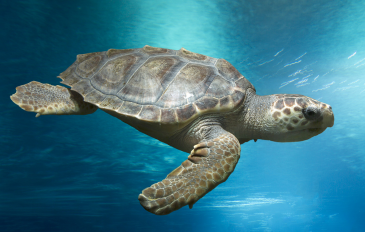
Did Hurricane Ian Affect Sea Turtles on Sanibel?
After Ian, we experienced a record number of Sea Turtle nests according to SCCF. All clean up efforts on the beaches were done outside of nesting season which gave turtles the most optimal conditions possible in the wake of a storm. One year after Hurricane Ian, the Sanibel-Captiva Conservation Foundation reported that they discovered loggerhead turtles created a record 1,177 nests on Sanibel & Captiva Islands, while green sea turtles had a more normal nesting season with 24 nests.
During the entire spring-to-fall season, 27,368 hatchlings dug their way up and out of nests on the islands and made their way to the Gulf of Mexico. Learn More About SCCF's Sea Turtle Programs
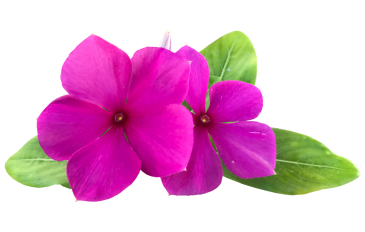
What Impacts Did the Hurricane Have on Trees and Plants?
One of the oddest occurrences we experienced a few months after Hurricane Ian was tomatoes, lots and lots of them. Tiny ones, giant ones and every size in between. In a landscape turned brown and ashen with dead vegetation nearly everywhere, how could this happen? We saw the same thing to a lesser degree with sunflowers sprouting in odd areas. The tomato mystery was so troubling that we put out a survey to islanders to solve this riddle. What we found was astounding. Nearly everyone had encountered tomatoes in their yard or a neighbor's yard. You may not want to read any further if you have a weak constitution because the answer to this riddle is not pretty. Apparently tomato seeds are not digestible. Which means they eventually end up in the sewer system. The 15 foot storm surge that lasted nearly 5 hours caused all our sewer lift stations to fail on the Island. Apparently sludge mixed with saltwater and sewage are the perfect mix for growing tomatoes!
Most apparent were the success stories of native vegetation surviving. Many trees however were left in standing saltwater too long for them to recover. Most of these dead trees have been removed to prevent fire risks. In many areas, the native plants have made remarkable recoveries and the islands are lush and green once again. Dune Daisies and Periwinkles are also thriving sprouting beautiful bouquets nearly everywhere.
What's Up with No-See-Ums and other Insects on Sanibel after Ian?
Following Hurricane Ian, the no-see-ums we joked were so thick you could "see-em". At first many of us thought there must be a mutation that thrived on the thick sludge that covered the Island after Ian. To find the real answer, we turned to the experts at the Sanibel Captiva Conservation Foundation for the science behind this mystery. A special thanks to Chris Lechowicz, Wildlife and Habitat Management Director for giving us the scientific scoop on this issue.
No-see-ums are a type of fly (Order Diptera), in the Family Ceratopogonidae (biting midges) that are found throughout the world representing almost 4000 species. In southwest Florida, there are multiple species in the Genus Culicoides that begin as an egg, that hatches into a larva, that changes into an adult fly.
The increase in the numbers of “no-see-ums” or biting midges on the island is a result of the storm surge from Hurricane Ian that inundated Sanibel’s vast freshwater bodies with pure saltwater converting them to brackish water bodies, as well as increasing the salinity in mildly brackish areas. This has occurred on islands as far south as Marco where biting midges have much more habitat in which to propagate which is being felt by both residents and visitors. With increased rainfall, the salinity of many of Sanibel’s wetlands will decrease over time, especially those connected to the Sanibel River due to weir releases during high water. As wetlands become more fresh with subsequent rainy seasons, reduced quantities of no-see-ums should be evident.
Peak no-see-um breeding time in southwest Florida is March and April. This is when, in a non-El Niño year, water levels are low and higher concentrations of salt make optimal conditions for reproduction. Control efforts in the past in other places have included the use of DDT on adults, but the environmental effects far outweigh the results. Insect repellents that contain deet for personal application are effective when needed. The peak activity of no-see-ums is dusk and dawn when the wind is minimal, as well as on cloudy days. Although most people do feel the irritating bite of these biting midges that goes away quickly, some people have longer experiences. Some people refer to them as sand flies, which is incorrect, as that is another family (Tabanidae) of flies including the horse flies. So in summary, the more rains we receive will help to dilute the salt content in the wetlands which in turn will reduce the breeding habitat for these annoying pests.
Many of our other insects have seen a change in population after Ian. Pollinators once plentiful are beginning to return to the islands as the vegetation grows more lush and blooms.
- SCCF - Sanibel Captiva Conservation Foundation
- Pfeifer Funds SCCF Habitat Management Program
- Pfeifer Realty Helps SCCF Land Acquisitions
- Pfeifer Fellowship Supports SCCF and UF Collaborative Research
- Pfeifer Realty On-going Community Service
- Sanibel Home & Condo Sales - 1 Year After Hurricane Ian
- What's Open on Sanibel and Captiva One Year After Hurricane Ian
- Hurricane Ian Recovery Journal
- Southern Living - Sanibel, A Year After Hurricane Ian
